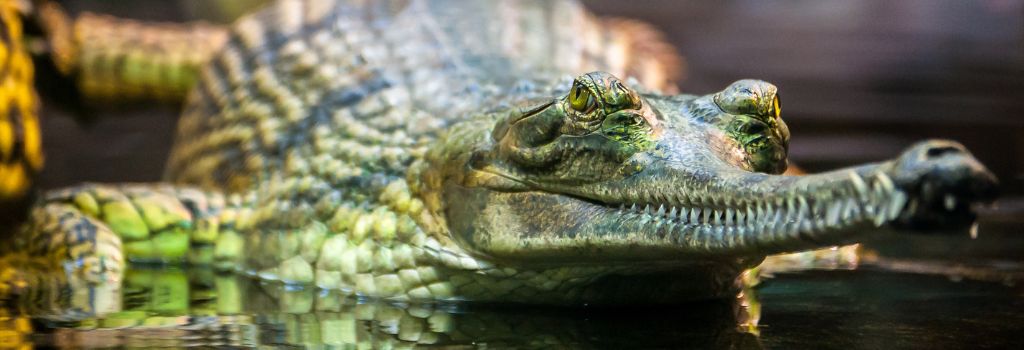Reptiles have roamed our planet for over 300 million years, adapting to diverse environments and playing crucial roles in ecosystems worldwide. However, many of these fascinating creatures now face unprecedented threats to their survival. From habitat loss to climate change, reptile species face several complex challenges.
As veterinarians, we’ve witnessed firsthand the impact of human activities on reptile populations. And our experiences treating injured and sick reptiles and participating in conservation efforts have given us a unique perspective on the need for action. In this blog post, we’ll explore the current state of endangered reptiles, highlight ongoing conservation initiatives, and provide practical ways for you to contribute to their protection. Let’s dive in!
The State of Endangered Reptiles
Recent studies have revealed alarming trends in reptile populations worldwide. According to the International Union for Conservation of Nature (IUCN) Red List, over 20% of reptile species are threatened with extinction. This includes iconic creatures like sea turtles, iguanas, and several snake species.

Some of the most critically endangered reptiles include:
- Hawksbill Sea Turtle: Prized for their beautiful shells, these marine reptiles have been hunted to near extinction.
- Gharial: This unique crocodilian species is now found only in small pockets of India and Nepal.
- Jamaican Rock Iguana: With fewer than 200 individuals left in the wild, this species teeters on the brink of extinction.
- Ploughshare Tortoise: The illegal pet trade has decimated this tortoise species native to Madagascar.
- Grand Cayman Blue Iguana: Once considered extinct, conservation efforts have brought this species back.
The factors contributing to reptile endangerment are diverse and often interconnected. Habitat destruction due to urbanization and agriculture remains the primary threat. Additionally, climate change alters temperatures and weather patterns, affecting reptiles’ reproductive cycles and food sources. Pollution, invasive species, and overexploitation for the pet trade and traditional medicine markets further compound the problem.
Conservation Initiatives: Making a Difference
Despite the grim statistics, there’s reason for hope. Dedicated conservationists, researchers, and veterinary professionals worldwide work tirelessly to protect endangered reptiles and their habitats. Here are some inspiring initiatives that are making a real difference:
Headstarting Programs
Headstarting involves collecting eggs or hatchlings from vulnerable wild populations, raising them in captivity until they’re large enough to have a good chance of survival, and then releasing them back into their natural habitats. This approach has been particularly successful with sea turtles and certain iguana species.
For example, the Jamaican Iguana Recovery Program has successfully increased the wild population of this critically endangered species through headstarting efforts.
Habitat Restoration and Protection
Preserving and restoring natural habitats is necessary for the long-term survival of endangered reptiles. Organizations like the Turtle Conservancy protect critical habitats for threatened turtle and tortoise species worldwide.
In the Galapagos Islands, efforts to remove invasive species and restore native vegetation have benefited the iconic Galapagos Giant Tortoise. Our veterinary colleagues in these regions often participate in health assessments of wild populations to monitor the success of such restoration efforts.
Anti-Poaching Initiatives
Combating illegal wildlife trade is crucial for many endangered reptile species. Organizations like TRAFFIC work with law enforcement agencies to disrupt poaching networks and reduce demand for reptile products.
Veterinary forensics plays an increasingly important role in these efforts. By examining seized animals and products, veterinary professionals can provide crucial evidence for prosecutions and help trace the origins of illegally traded reptiles.
Captive Breeding Programs
Zoos and specialized breeding centers play a vital role in maintaining genetic diversity and boosting populations of critically endangered reptiles.
Veterinarians collaborate closely with these institutions to ensure the health of captive populations and assist with reproductive technologies when needed.
How You Can Help
While the scale of the challenge may seem overwhelming, you can contribute to reptile conservation efforts in many ways. Here are some practical steps you can take:
Educate Yourself and Others
Learn about the reptile species in your area and the challenges they face, and share your knowledge with your friends, family, and community. The more people understand about these amazing creatures, the more likely they are to support conservation efforts.
Support Reputable Conservation Organizations
Donate to or volunteer with reptile conservation organizations. Research their track records and choose ones that allocate a high percentage of funds directly to conservation work.
Make Sustainable Choices
Lower your environmental footprint by making eco-friendly choices in your daily life. Using biodegradable products, reducing plastic waste, and supporting sustainable agriculture practices that minimize habitat destruction are all ways to make a difference.

Be a Responsible Pet Owner
If you’re considering a reptile as a pet, adopt from a reputable rescue organization rather than purchasing from a pet store. Ensure you can provide proper care for the animal’s entire lifespan, which can be several decades for some species.
Report Wildlife Crime
If you suspect illegal trade or poaching of reptiles, report it to your local wildlife authorities.
Create a Reptile-Friendly Garden
If you have a garden, consider creating habitats that support local reptile species. This might include rock piles for basking, native plants for cover, and avoiding the use of pesticides.
Participate in Citizen Science
Many conservation projects welcome volunteers to monitor nesting sites or report reptile sightings. These efforts contribute valuable data to researchers and conservationists.
Advocate for Policy Changes
Contact your local representatives and express your support for wildlife conservation initiatives. Advocate for stronger protection for endangered species and their habitats.
Choose Sustainable Tourism
When traveling, opt for eco-friendly tours that respect wildlife and support local conservation efforts. Avoid attractions that exploit reptiles for entertainment.
Spread Awareness on Social Media
Use social media platforms to share information about endangered reptiles and conservation efforts. Engage with reputable organizations’ content to help amplify their messages.
Conclusion
As veterinarians, we’re committed to the health and well-being of all animals, including our scaly friends. By taking action in your daily life and supporting conservation initiatives, you can make a real difference in the fight to protect endangered reptiles. These ancient and remarkable creatures have survived for millions of years, adapting to countless challenges. With our help, they can continue to thrive in the face of modern threats.
Remember, every small action counts. Whether it’s reducing your plastic use to protect sea turtles or creating a backyard habitat for local lizards, your efforts contribute to the larger goal of reptile conservation.
If you’re concerned about a reptile’s health or want to learn more about how you can support local conservation efforts, don’t hesitate to schedule an appointment with a reptile vet. We’re here to provide expert care for reptiles and guide you in your conservation journey. Together, we can ensure a future where these fascinating creatures continue to play their vital roles in our world’s ecosystems.
